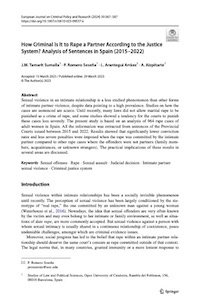By Christian Gunadi; Yuyan Shi,
Recreational cannabis legalization (RCL) has been advocated as a way to reduce the number of individuals interacting with the US criminal justice system; in theory, however, cannabis decriminalization can achieve this objective without generating the negative public health consequences associated with RCL. It is still unclear whether RCL can bring additional benefits in terms of reducing cannabis possession arrests in states that have already decriminalized cannabis. OBJECTIVE - To examine whether RCL was associated with changes in cannabis possession arrests in US states that had already decriminalized cannabis during the study period and whether these changes differed across age and racial subgroups. DESIGN, SETTING, AND PARTICIPANTS - This repeated cross-sectional study used cannabis possession arrest data from the Federal Bureau of Investigation Uniform Crime Reporting Program (UCRP) for US states from 2010 through 2019. Statistical analysis was conducted from October 6, 2021, to October 12, 2022. EXPOSURES - Implementation of statewide RCL. MAIN OUTCOMES AND MEASURES - Cannabis possession arrest rates per 1000 population per year were assessed with a quasi-experimental difference-in-differences design and were used to estimate the association of RCL with arrest rates in RCL states that had or had not decriminalized cannabis before RCL. This association was also examined in subgroups for age (adults vs youths) and race (Black vs White). RESULTS - This study included UCRP data for 31 US states, including 9 states that implemented RCL during the study period (4 without and 5 with decriminalization) and 22 non-RCL states. In the 4 states that had not decriminalized cannabis before legalization, RCL was associated with a 76.3% decrease (95% CI, −81.2% to −69.9%) in arrest rates among adults. In the 5 states that had already decriminalized cannabis, RCL was still associated with a substantial decrease in adult arrest rates (−40.0%; 95% CI, −55.1% to −19.8%). There was no association of RCL with changes in arrest rates among youths. In addition, changes in arrest rates associated with RCL did not differ among Black and White individuals. CONCLUSIONS AND RELEVANCE - In this repeated cross-sectional study, RCL was associated with a sizable reduction in cannabis possession arrests among adults in states that had already decriminalized cannabis during the study period (2010-2019), albeit the magnitude was smaller compared with states that had not decriminalized cannabis before RCL. In addition, RCL did not seem to be associated with changes in arrest rates among youths or disparities in arrest rates among Black and White individuals.
JAMA Netw Open. 2022 Dec 5;5(12):e2244922



